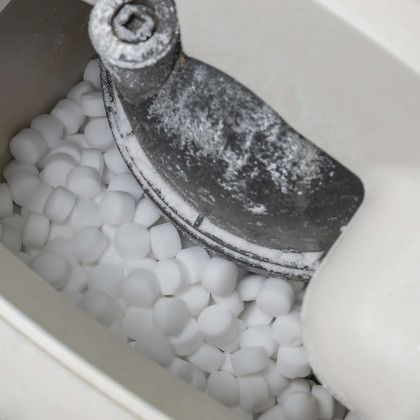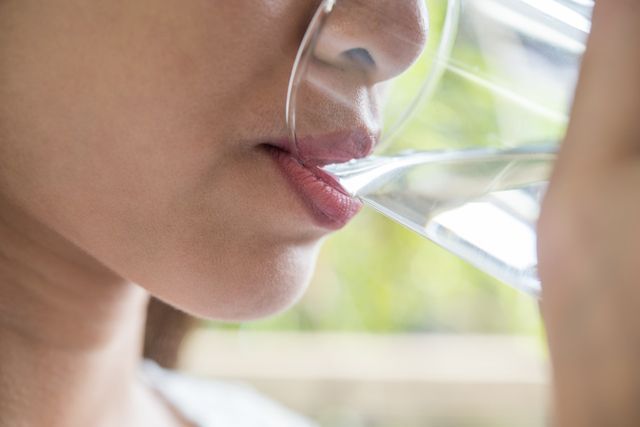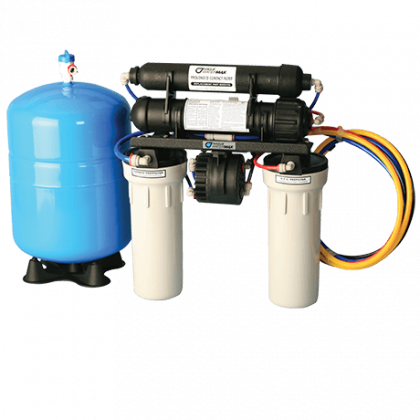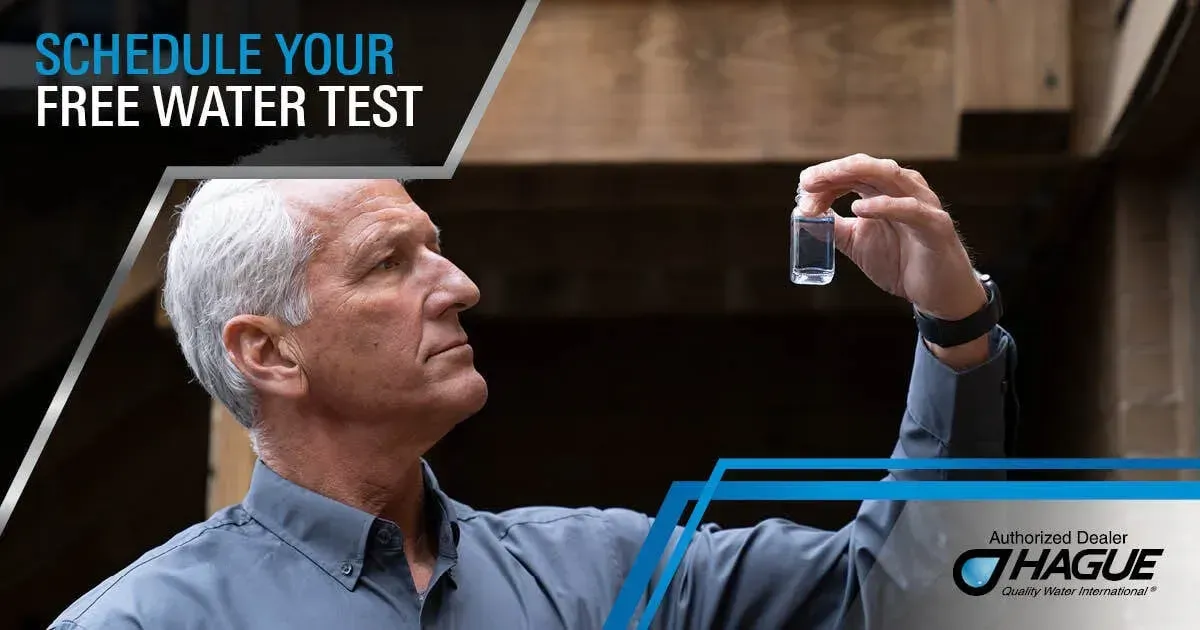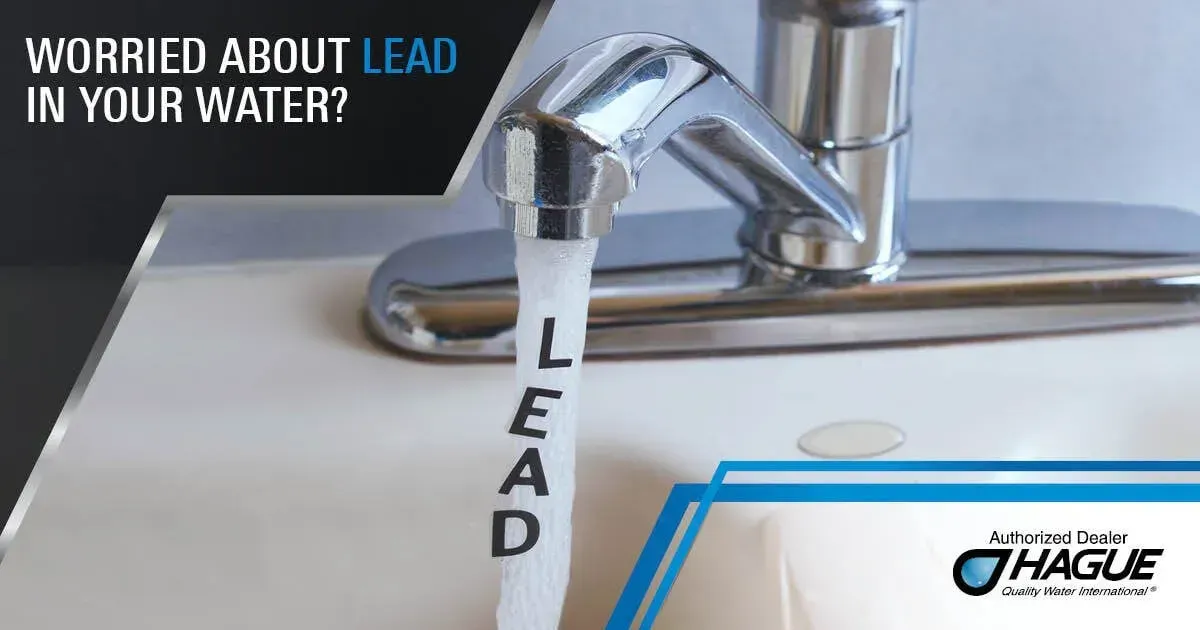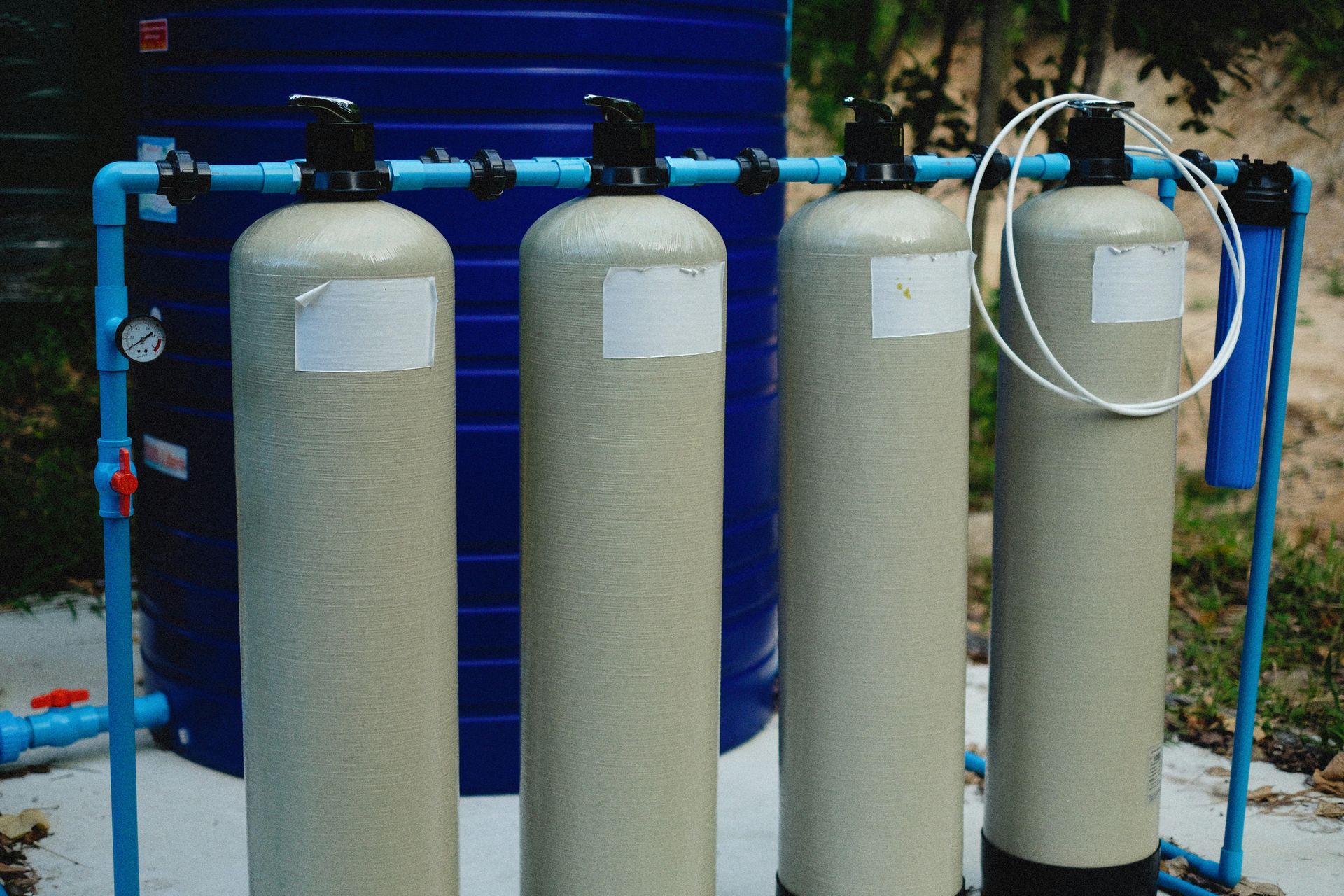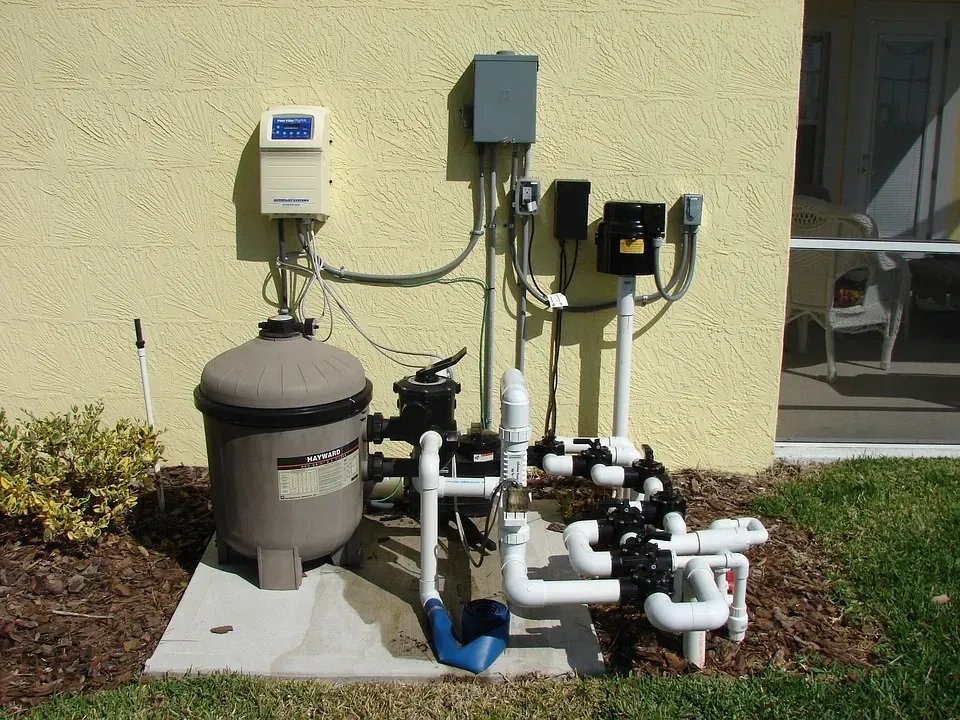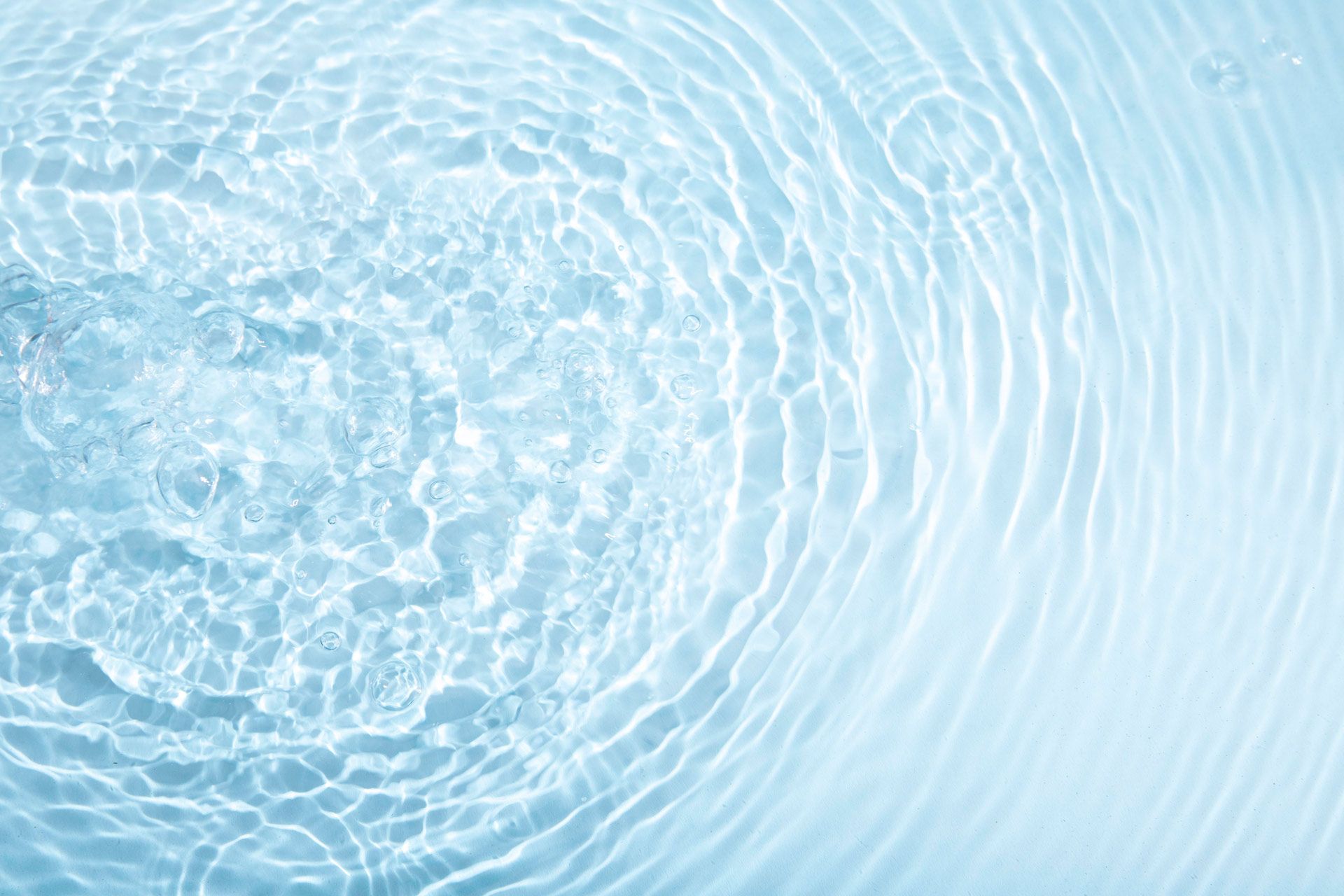How Do Water Softeners Work?
January 31, 2024
Have you ever noticed a stubborn, chalky residue on your faucets and showerheads? That's the signature of hard water, a common nuisance in many households. Hard water wreaks havoc not just on your appliances but also on your skin and hair, leading to a multitude of hidden costs and inconveniences. Surprisingly, a study by the Water Quality Association revealed that hard water troubles 85% of American homes. The solution? A water softener – a vital, yet often overlooked, component of maintaining a pristine and efficient home. This comprehensive guide will demystify how water softeners work, ensuring you make an informed decision for your home.
Ready to dive in? Let's unfold the mystery of water softeners and turn your water woes into water wins!
Understanding Hard Water
Hard water is like an uninvited guest that overstays its welcome. It's water that contains high levels of minerals, particularly calcium and magnesium. While it's safe to consume, its presence is felt in less pleasant ways. Ever felt your skin dry after a shower, or found your bright clothes turning dull? That's hard water at play.
The Hard Truth About Hard Water
The minerals in hard water can build up in pipes and appliances, leading to inefficiency and costly repairs. Limescale, the white, chalky residue, can shorten the lifespan of your coffee maker or clog your showerheads. Moreover, hard water can make soaps and detergents less effective, resulting in less lather and more product usage.
A study by the Virginia Cooperative Extension estimated that hard water is responsible for up to a 48% loss in efficiency in water heaters. This not only leads to higher energy bills but also to the premature replacement of appliances.
Spotting the Signs
Identifying hard water is the first step towards tackling it. Here are some tell-tale signs:
- Stains or residue on faucets and tiles.
- Faded laundry and scratchy fabrics.
- Reduced water flow from mineral buildup in pipes.
- An increase in soap usage and less effective cleaning.
- Recognizing these indicators is crucial in determining the necessity for a water softener in your household.
The Basics of Water Softening
Imagine turning hard, problematic water into soft, friendly water that pampers your skin, clothes, and appliances. That's the magic of water softening. But how does it work? Let's break it down.
The Goal of Water Softening
The main aim of water softening is to remove the minerals that cause water hardness, predominantly calcium and magnesium. By tackling these minerals, water softeners prevent the negative effects of hard water, enhancing the quality of water for everyday use.
How Softeners Save the Day
Soft water can significantly improve your daily life. It enhances the efficiency of your appliances, ensures your clothes remain bright and soft after washing, and even improves your skin and hair texture. Moreover, by reducing mineral buildup, softeners prolong the lifespan of your plumbing and appliances, translating to savings on maintenance and replacement costs.
The Science Behind Softening
At the heart of most water softeners is a process called ion exchange. Here’s a simple breakdown:
- Ion Exchange Resin: Your water softener contains a resin bed, which holds tiny resin beads.
- The Exchange: As hard water passes through the resin, the beads attract and hold onto the minerals, swapping them for sodium ions.
- Regeneration: Once saturated, the system flushes the beads with a saltwater solution, washing away the hard minerals and recharging the beads with sodium.
This cycle repeats, ensuring your water is consistently softened and your home is protected from the grip of hard water.
Types of Water Softeners
Navigating the world of water softeners can feel like a plunge into deep waters. But fear not! We're here to clear the waters. There are several types of water softeners, each with its strengths and considerations. Let's explore the most popular ones.
Salt-Based Ion Exchange Softeners
These are the traditional heroes of water softening, working on the principle of ion exchange we discussed earlier. They're highly effective but require regular maintenance, including salt replenishment.
- Pros: Highly effective in removing hardness.
- Cons: Requires regular salt refills and produces wastewater during regeneration.
Salt-Free Water Conditioners
Don't like the idea of adding salt? Salt-free conditioners might be your match. They neutralize the minerals instead of removing them, preventing scale buildup.
- Pros: Maintenance-free and eco-friendly, no salt or chemicals needed.
- Cons: Less effective in very hard water areas; doesn't truly 'soften' the water.
Dual-Tank Softeners
If you have a larger household or constant water needs, dual-tank softeners ensure you never run out of soft water. When one tank regenerates, the other takes over.
- Pros: Continuous supply of soft water.
- Cons: Larger and more expensive, requires more space.
Magnetic and Electronic Softeners
These are the new kids on the block. They use a magnetic or electronic field to alter the electromagnetic properties of the minerals, reducing scaling.
- Pros: Compact and easy to install.
- Cons: Effectiveness varies, and they may not work in every situation.
Recent market data suggests a growing trend towards eco-friendly options, with salt-free conditioners gaining popularity. However, the choice ultimately depends on your specific water hardness level, household size, and personal preferences.
How a Water Softener Works – The Technical Details
Grasping the technicalities of a water softener can empower you to make savvy choices and ensure smooth operation. Let’s demystify the core workings, focusing primarily on the popular ion-exchange water softener.
The Core Components
Every ion-exchange water softener boasts three main components:
- Mineral Tank: This is where the magic happens – water is softened here.
- Control Valve: It measures water usage and initiates regeneration as needed.
- Brine Tank: This sidekick holds a salt solution used to recharge the resin beads in the mineral tank.
The Softening Cycle: A Closer Look
- Service Cycle: Hard water enters the mineral tank, flowing through the resin beads. These beads, charged with sodium ions, attract and trap mineral ions, releasing sodium into the water.
- Backwash Phase: The control valve reverses water flow to flush dirt out of the tank.
- Recharge (Regeneration) Phase:
- Brining: The brine solution from the brine tank flows through the mineral tank, soaking the resin beads.
- Brine Rinse: The mineral tank is flushed, carrying the brine, along with the trapped minerals, into the drain.
- Rinse Cycle: Fresh water purges excess brine from the resin beads.
- Refill: The brine tank refills, prepping for the next cycle.
Technological Advancements
In recent years, advancements have focused on efficiency and eco-friendliness. Some modern systems feature innovative technologies like:
- Smart Regeneration: Systems adapt to your water usage patterns, reducing water and salt usage.
- Alternative Resins: New resin materials that offer longer lifespans or specialized ion exchange for specific minerals.
Incorporating these advancements ensures your water softener is not just a tool, but a smart, resource-saving companion in your home.
Installation and Maintenance
Installing and maintaining a water softener doesn't have to be a daunting task. With the right guidance and a proactive approach, you can ensure your system runs efficiently, providing soft water for years to come.
Installation: Laying the Groundwork
- Choose the Right Location: Ideally, install your softener close to the point where water enters your home. Ensure it's accessible for maintenance and away from direct sunlight or extreme temperatures.
- Understand Your Plumbing: Before installation, know your plumbing layout and the type of pipes you have. This knowledge is crucial, especially for DIY installations.
- Follow the Manufacturer's Instructions: Each system is unique. Adhere closely to the guidelines provided by the manufacturer to avoid any mishaps or warranty issues.
Maintenance: Keeping the System in Prime Condition
- Salt Level Check: Regularly inspect the brine tank to ensure it has enough salt. Low salt levels can disrupt the regeneration cycle.
- Salt Bridges: Sometimes, a hard crust forms in the brine tank, creating a gap between the water and the salt. Break these bridges to keep the system functioning properly.
- Resin Bed Cleaning: Resin beads can get coated with iron or other materials, reducing their effectiveness. Use resin bed cleaners to keep them in top shape.
- Regular Servicing: Schedule professional check-ups to spot any potential issues early on.
A study by the Water Quality Research Foundation noted that well-maintained water softeners could retain their efficiency for 15 years or more, proving that a little care goes a long way.
The Environmental Impact and Efficiency of Water Softeners
While water softeners are champions in combating hard water, it's crucial to weigh their environmental footprint. Let's delve into the ecological aspects and explore how innovation is making softeners more planet-friendly.
The Salt of the Matter
Traditional salt-based softeners have raised environmental concerns primarily due to their salt usage and the creation of saline wastewater. This brine can pose challenges for wastewater treatment plants and potentially harm aquatic ecosystems if not properly managed.
Efficiency Matters
Water softeners themselves consume water during the regeneration process. The efficiency of this process varies widely among models. Older or improperly configured units may use more water than necessary, whereas modern, high-efficiency models are designed to minimize water and salt use.
Strides in Sustainability
Recent advancements are addressing these concerns head-on:
- Eco-friendly Models: Newer softener models are engineered for higher efficiency, reducing salt and water usage during regeneration.
- Alternative Technologies: Salt-free conditioners and magnetic or electronic descalers offer a more eco-friendly approach, though their suitability depends on the specific water conditions of a home.
Making an Informed Choice
When selecting a water softener, consider:
- Efficiency Ratings: Look for models with high efficiency ratings to ensure minimal environmental impact.
- Size Appropriately: An oversized or undersized unit can be less efficient. Choose one that matches your household's water usage.
- Professional Advice: Consulting with a water treatment professional can provide insights into the most suitable and sustainable options for your home.
A study by the National Sanitation Foundation (NSF) emphasized the importance of choosing certified water softeners to ensure they meet environmental and performance standards, highlighting the role of responsible choices in sustainability.
Making the Right Choice
Selecting the right water softener is a decision that transcends mere functionality. It's about ensuring quality, reliability, and local expertise. For residents of Central Indiana, including Westfield, Carmel, Brownsburg, Avon, Plainfield, Martinsville, and Mooresville, PureSoft Water Treatment Inc. stands out as a beacon of excellence in water treatment solutions.
Why Choose PureSoft Water Treatment Inc.?
Local Expertise with a Personal Touch
PureSoft Water Treatment Inc., nestled in the heart of Franklin, IN, understands the unique water challenges of Central Indiana. Their deep-rooted presence in the community translates into personalized, attentive service that big-box retailers simply can't match.
Comprehensive Water Solutions
Whether you're battling hard water woes or looking to refine your water's taste and purity, PureSoft offers an extensive range of solutions:
- Water Softeners: Experience the pinnacle of water softening technology. PureSoft's systems ensure every drop of water in your home is luxuriously soft, protecting your appliances and pampering your skin.
- Whole Home Treatment Systems: Go beyond softening. These systems offer comprehensive water treatment, delivering pristine water throughout your home.
- Water Filters: Dive into freshness with state-of-the-art water filters. PureSoft ensures that purity is not just a promise but a palpable difference in every sip and shower.
Quality and Reliability
PureSoft is synonymous with quality. By choosing primarily Hague products, renowned for their robust construction and innovative features, PureSoft doesn't just install water systems; they invest in your home's future.
Commitment to Customer Satisfaction
From the first consultation to post-installation support, PureSoft's dedicated team ensures a seamless, satisfying experience. Their deep commitment to customer satisfaction is not just a policy, but a principle they live by.
Your Next Steps
Don't let hard water define your home's story. Contact PureSoft Water Treatment Inc. today and take the first step towards water that's not just soft, but pure and perfect. Whether you're contemplating a new installation or seeking expert repairs, PureSoft is your trusted ally, ready to transform your water, and with it, your life.
Conclusion
Embarking on the journey to improve your home's water quality is not just a choice—it's an investment in your daily comfort and long-term well-being. Understanding how a water softener works is the key to unlocking a world where appliances last longer, clothes retain their color and softness, and every shower feels like a rejuvenating experience.
With PureSoft Water Treatment Inc., you're not just installing a water treatment system; you're elevating your lifestyle. The blend of local expertise, top-tier products like Hague, and an unwavering commitment to customer satisfaction makes PureSoft the go-to choice for residents of Central Indiana.
Remember, the right water softener does more than just soften water. It brings peace of mind, knowing that your water is in the hands of experts who care deeply about the quality of every drop. Whether you're in Westfield, Carmel, Brownsburg, Avon, Plainfield, Martinsville, or Mooresville, PureSoft Water Treatment Inc. is your trusted partner, dedicated to ensuring that your water is as pure as it is soft.
Call to Action
Are you ready to transform your water experience? Contact PureSoft Water Treatment Inc. today. Allow the purity of your water to reflect the quality of your life. It's time to say goodbye to hard water and hello to a world of softness and purity, all delivered with the local expertise and personalized care you deserve.
